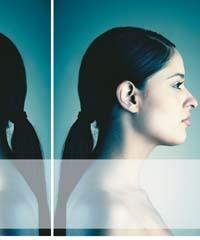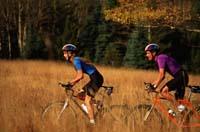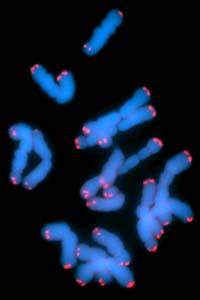Sums up life at rest

To prove this, the researchers have analyzed 2,401 twins. On the one hand, they have checked the number of exercises performed by each of them, and on the other, they have measured the length of telomeres. Telomeres are located at the end of chromosomes and protect DNA. In some ways, when the cells are distributed, telomeres are responsible for the fact that DNA is not damaged.
But telomeres do not always have the same length. As the years go by, they are shortened, so with age increases the risk of damaging DNA. On the other hand, telomeres allow to know the age of the cells of each person: the smaller the telomeres, the older the cells of the person.
However, telomeres not only shorten with age, but also influence in their length other factors. For example, tobacco burning shortens telomeres, so the cells of people who burn a lot are older than those of non-smokers of the same age. And the age of cells is related to the length of life of the person.
Study of twins

The researchers of London wanted to know if the sport practice influences the length of the telomeres and for it they studied the twins. The monocygothic twins, that is, the twins that have been developed on the same egg and sperm, have the same genetic information and, at first, their telomeres have the same length. Therefore, they are appropriate to know the influence of the environment or customs in the genes, since if there are differences in the genes, at least in part, they are due to these environmental factors.
Relating the sport habits of the twins with the length of the telomeres, the researchers have discovered that although they are twins there is a remarkable difference in the length of the telomeres if one of them practices a lot of sport and the other little. Two groups were differentiated: those who practiced more sports had an average of three hours and twenty minutes weekly, while those who practiced less had a maximum dedication of 16 minutes weekly. Well, the telomeres of the first group are 200 nucleotides longer than those of the rest (the nucleotides are the units that form the telomeres).
As the researchers have explained, this difference in the length of telomeres means that those who practice more sport are ten years biologically younger than others.
Looking for reasons

The researchers themselves recognize that the only difference between groups that practice more and less sport will not be the number of physical exercises they perform. It will probably vary the eating habits, the weight, the social level, etc., characteristics that can also influence the length of telomeres.
However, if the sport is related to the length of telomeres, scientists have tried to explain the reason. They believe that the cells of sedentary people may be renewed more often than those of others. The more it is renewed, the sooner telomeres are shortened. On the other hand, it is logical to think that sports practice favours oxidation reactions in cells, but it seems that this oxidation benefits cells.
Whatever the reason, scientists are clear that the study with twins is revealing. We have, therefore, one more reason to do sport.
Published in Deia
Buletina
Bidali zure helbide elektronikoa eta jaso asteroko buletina zure sarrera-ontzian











